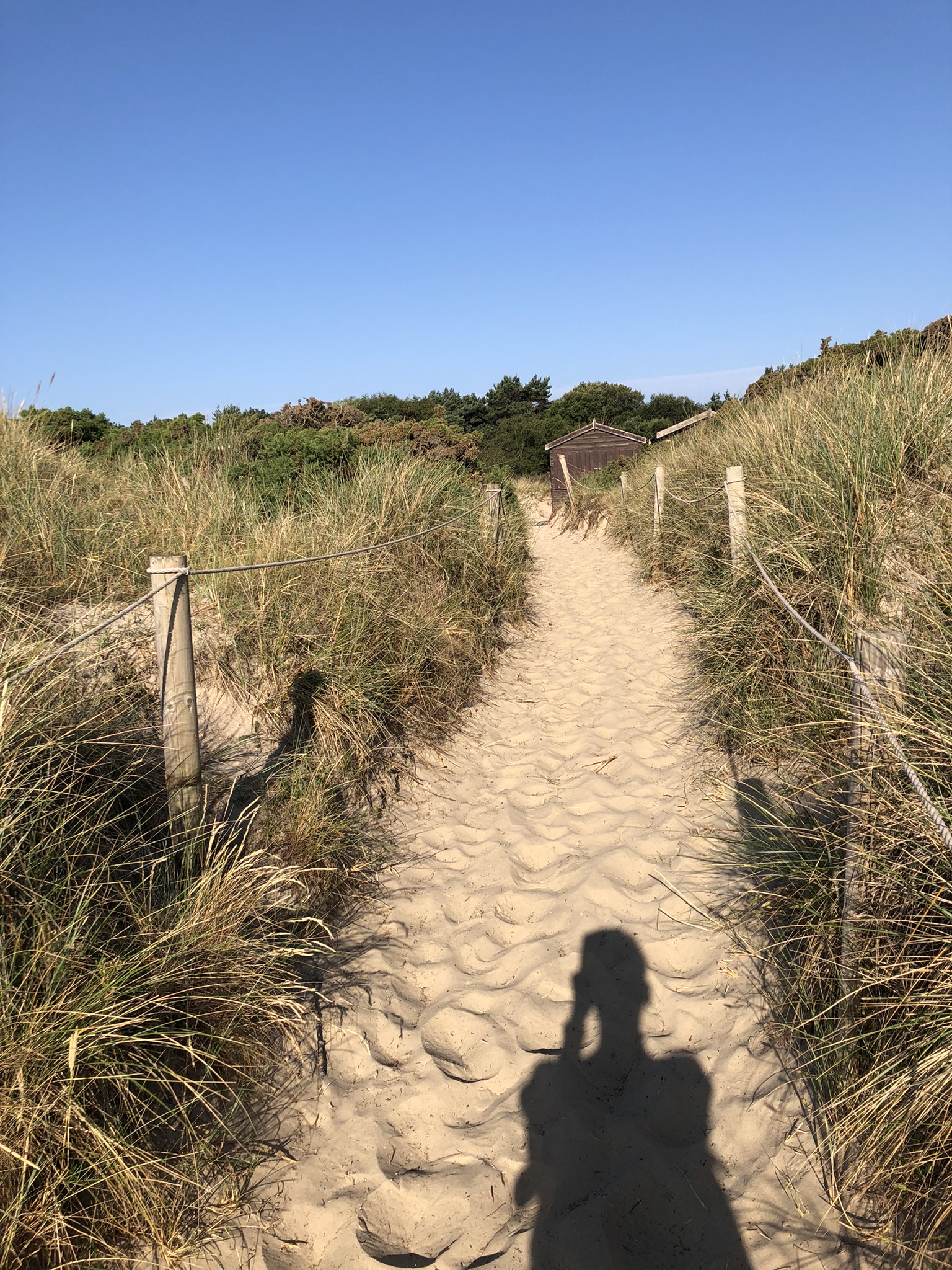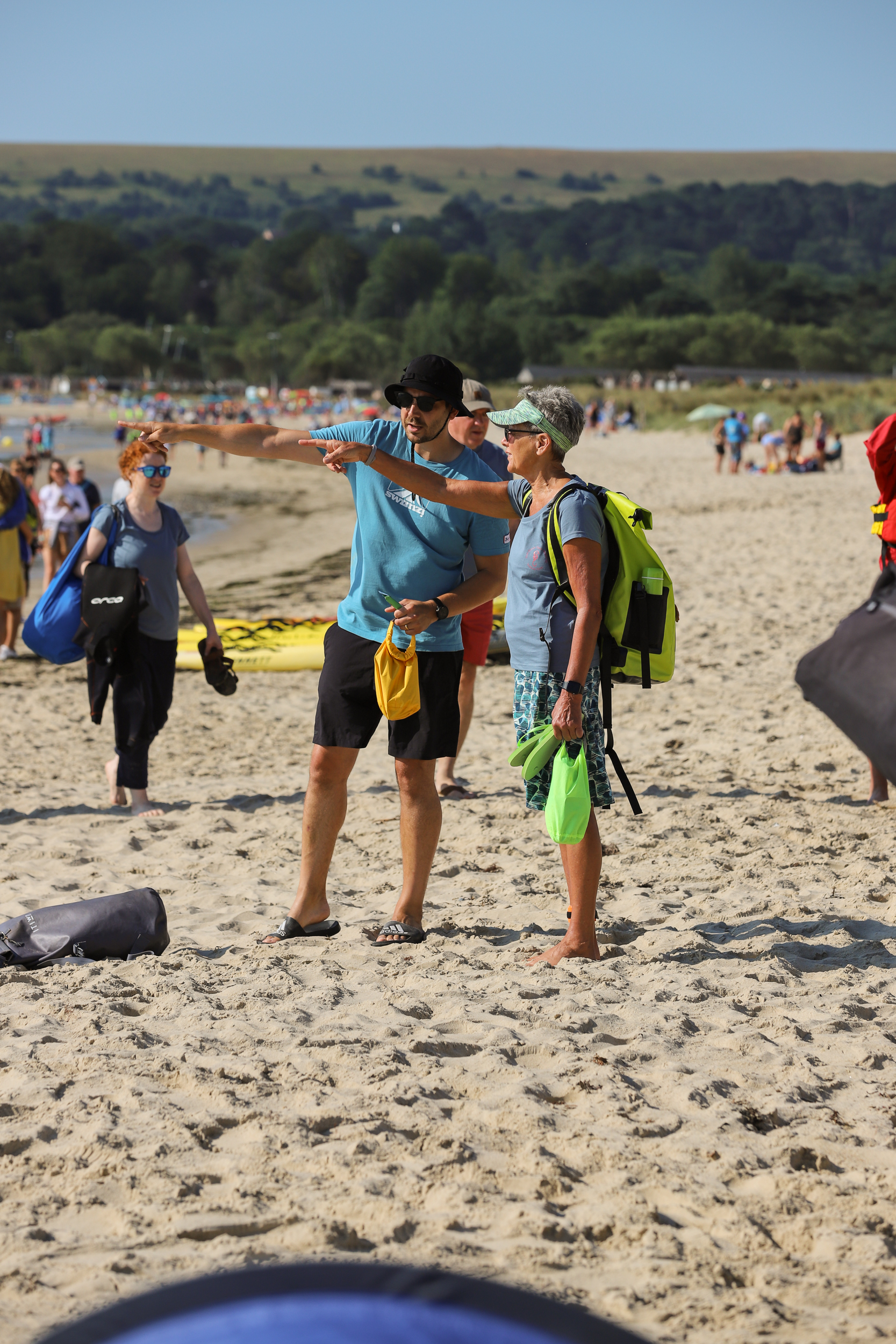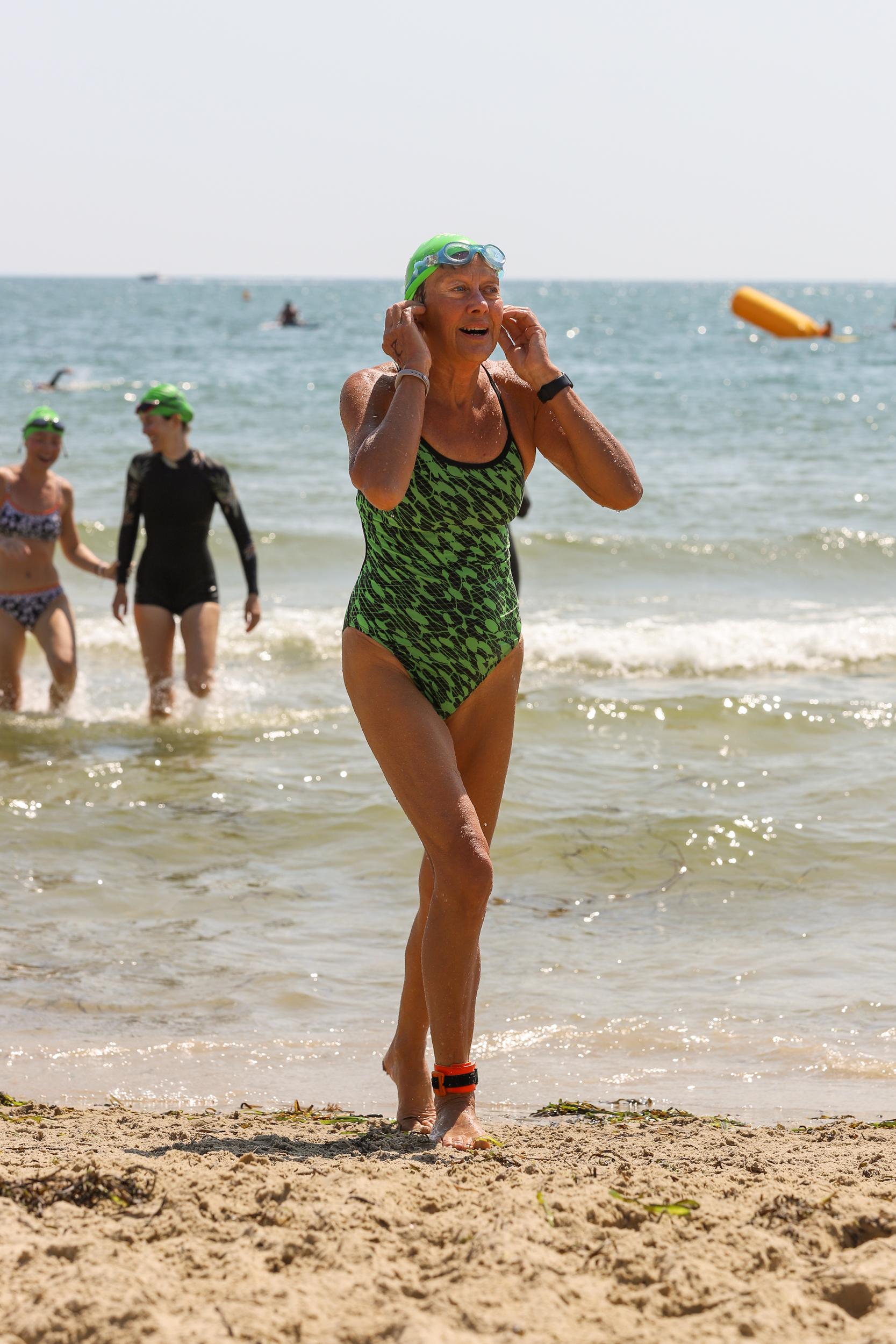
Shall I just be a lonely stranger on the shore (Acker Bilk, 1961)
I recently found myself at a swimming event (The Seahorse Swim, at Studland Bay) without my usual, family support team or swimming buddy. Unusually, everyone was away doing something else and so there I was, on the day of the swim, all alone!
Except that, of course, I wasn’t alone because there were a couple of hundred other swimmers there – some taking part in the swim and others supporting us as volunteer marshalls and safety crew.
Connected Community
Coincidentally, that same week I had been in conversation with someone who had remarked on the lovely, friendly, connecting nature of the outdoor swimming community. They observed how they had been welcomed, chatted to and made to feel included but had not felt any pressure to ‘become friends’ with anyone or to extend the connection into any other aspect of their life. They had enjoyed the ‘loose connection’ with other swimmers who were sharing an interest and a particular moment in time. This conversation resonated with me as I stood on Knoll Beach, Studland, happily chatting to and exchanging experiences of swimming with, complete strangers – most of whom I will never meet again – but with whom I experienced a welcome connection and reciprocity.

Community theorists, such as Willmott (1986), call this type of connection a ‘community of interest’: a community of people who share a common interest or passion. In a community of interest, people exchange ideas and thoughts about their shared passion, but may know (or feel the need to know) very little about each other outside of this area.
Robson (2020), has more recently referred to this sort of connection: the opportunity to have “weak ties” and fleeting interactions with “vague acquaintances” as important in contributing to one’s Social Capital. According to Robson (2020) the act of a “shared experience”, of doing the same thing at the same time with others appears to create a social bond that can be independent of any deeper relationship. (See my blog post I’m On My Way for a discussion of this)
Of course, within the looser connection of a community of interest, closer, bonding connections and friendship groups will emerge and these social connections are an important outcome of engaging in an activity such as outdoor swimming. But the broader point is, that I, (and the colleague I had the conversation with) felt accepted as a part of something, without knowing (or caring about) anything about the social, political, family or educational backgrounds of the others I was connecting with. The ‘thing’ that holds us together is swimming: talking about swimming, about tides, about the weather, about the swimming route; sharing tips and experience; and congratulating and celebrating together at the end – before dispersing into our separate lives.
And so, on that day, I did not feel alone. I did not feel like an ‘outsider’. I joined an instantly recognisable and friendly group of swimmers with whom I had much in common and plenty to talk about – even though I don’t know their names!
Smell the sea, and feel the sky,
Let your soul & spirit fly, into the mystic. (Van Morrison, 1971)
Nature Connectedness
And it is not only social connection that outdoor swimming offers to those of us who do it regularly. There are many reports suggesting positive health and well-being outcomes from engaging in outdoor activities, in groups, such as with outdoor swimming and I have written about some of these elsewhere (Oliver, 2021) and in earlier blog posts (see The Happy Club)
More recently, there are reports of growing evidence that spending time in the natural environment, such as swimming in the sea, in lakes and in rivers is also associated with a greater awareness of and care for better environmental outcomes. According to Martin et al, (2020) individuals who visit natural spaces weekly – and feel psychologically connected to them – will not only feel better mentally and physically, they’re also more likely to engage in environmentally friendly behaviours which promote the health of the planet.
This interest in and care for the natural environment – especially for the sea and its beaches – was one of the reasons I was so keen to sign up to take part in The Seahorse Swim, that is held each year at Knoll Beach in Studland Bay. Not only is it a swim in a beautiful location, organised by a lovely group of people from the East Dorset Open Water Swimming Club, but it also raises money for The Seahorse Trust and The National Trust (who own and look after the beach) and the Dorset Wildlife Trust.
.
The Seahorse Trust
The Sea Horse Trust is a small, charity dedicated to caring for seahorses and the natural world. At Studland, in Dorset, their Seahorse Project has been running since early 2009.
Studland Bay has a secret underwater forest, and the seagrass meadows on the sea bed are home to many endangered species, including the spiny seahorse, who come to the sea grass meadows of Knoll Beach every year to breed. As the spiny seahorse is a weak swimmer, it clings onto the seagrass with its tail, using it as an anchor to prevent itself being swept away.
Sea grass meadows can capture more CO2 than rainforests, making them hugely beneficial for the environment and mitigating climate change. However, the sea grass is critically endangered by climate, declining water quality and by storms and so action is being taken to protect it and in 2019, Studland Bay was designated a Marine Conservation Zone. Thanks to measures such as these, in 2020, the largest number of spiny seahorses, in over a decade, was recorded in Studland Bay.
The Seahorse Swim
I didn’t (as you might expect) see any seahorses as I swam round the 2 kilometre course off Knoll Beach. In fact, due to the windy conditions blowing the sea into my face and flattening the marker buoys, I was hard pressed to see much more than the swimmer in front of me, who I followed more in hope than expectation that they were ‘on course’! But I did see (and get entangled with) lots of sea grass, so I like to think there were some seahorses nestling safely on the sea bed, out of sight.
This was another of the lovely, friendly, community run, non-competitive swimming events that I so enjoy. It took me to a beach and an environment I had not previously swum in, and offered me a safe opportunity to do just that. It also introduced me to the valuable work of The Seahorse Trust.
Oh yes! And I also learned that the video for the Coldplay single “Yellow” was filmed on Knoll Beach! #keeplearning
“Look at the stars
Look how they shine for you
And all the things that you do” (Coldplay, 2000)

Photo Credits: Alan Dunkerley Photography (for The Seahorse Swim); Neil Garrick-Maidment (for The Seahorse Trust).
References
Bilk, A. (1961) Stranger On The Shore, Atlantic Records.
Coldplay (2000) Yellow, from the album Parachutes, Parlophone.
Crow, G. & Mah, A. (2012) Conceptualisations and meanings of “community”: the theory and operationalisation of a contested concept, University of Warwick, March 2012
Martin, L., White, M., Hunt, A., Richardson, M., Pahl, S.,and Bunt, J. (2020) Nature contact, nature connectedness and associations with health, wellbeing and pro-environmental behaviours, in Journal of Environmental Psychology, vol. 68, April 2020 doi.org/10.1016/j.jenvp.2020.101389
Morrison, V. (1970) Into the Mystic, from the album Moondance, Warner Brothers
Oliver, B. (2018) The Happy Club, justkeepswimmingBillie.Wordpress.com
Oliver, B. (2021) I’m On My Way, justkeepswimmingBillie.Wordpress.com
Oliver, B. (2021), “Cold water swimming for well-being“, Journal of Public Mental Health, Vol. 20 No. 2, pp. 105-110. https://doi.org/10.1108/JPMH-02-2021-0027
Robson, D (2020) The Surprising Ways Little Social Interactions Affect Your Health, New Scientist, 12th August 2020
Willmott, P. (1986) Social networks, informal care and public policy. London: Policy Studies Institute.
Local details
Sea temperature : 16 degrees Celsius
I swam 2000 metres
I was in the water for 59 minutes
I ate at Knoll Beach National Trust Cafe


